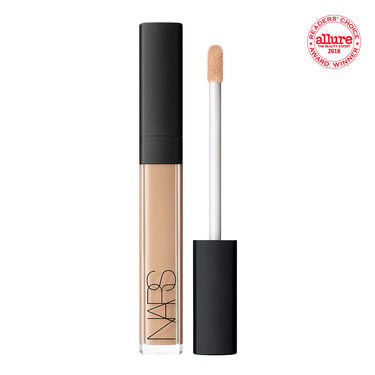CONCEALER
A concealer or color corrector is a type of cosmetic that is used to mask dark circles, age spots, large pores, and other small blemishes visible on the skin.
It is similar to foundation, but thicker and used to hide different pigments by blending the imperfection into the surrounding skin tone. Just like the concept of contouring has changed, so has the order of the application. Before, you might have applied your foundation, then blended on some bronzer and highlighter. But now, Nicole says to first blend a cream or liquid highlighter over your cheekbones, then apply your foundation on top, and then finish with the contour to add dimension. Unfortunately for me, but luckily for you, I have experienced both the bad and the good sides of foundation. Which means I've now got a lifetime of tips and tricks that will revolutionize your makeup routine, so you'll never deal with another patchy, shiny, heavy mess again.Concealer is the most self-explanatory product in my makeup bag. Like—what more can you do than swipe it under your eyes or on top of your zits, right? Welp, wrong, ’cause apparently, concealer can do way more than hide your annoyances
Both concealer and foundation are typically used to make skin appear more uniform in color. These two types of cosmetics differ in that concealers tend to be more heavily pigmented, though concealer and foundation are both available in a wide range of opacity. Concealer can be used alone or with foundation. It comes in different forms from liquid to powder. The first commercially available concealer was Max Factor's Erace, launched in 1954.[1] Camouflage makeup is a much heavier pigmented form of concealer. It is used to cover serious skin discolorations such as birthmarks, scars and vitiligo.Your color-correcting strategy depends entirely on your skin tone and concerns
Concealer is available in a variety of shades. When picking a concealer, people tend to choose one or two shades lighter than their skin tone to better hide their blemishes and dark circles under the eye. Some colors are intended to look like a natural skin tone, while others are meant to cancel out the color of a particular type of blemish. Concealers with yellow undertones are used to hide dark circles. Green and blue can counteract red patches on the skin, such as those caused by pimples, broken veins, or rosacea. A purple-tinted concealer can make sallow complexions look brighter.

